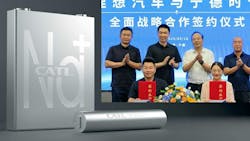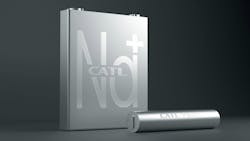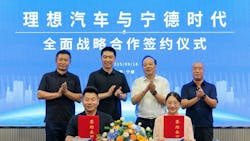CATL’s Next-Gen Sodium-Ion Battery Supports 500-km EV Range
What you'll learn:
- Range, lifetime, and other features of the Naxtra sodium-ion battery.
- The power density of the Naxtra — one of the major issues with sodium-ion batteries.
- Naxtra mass production expected in 2026.
The future EV battery will be required to have high energy density for increased range, faster charging speeds, extended lifespans, enhanced safety, and improved sustainability through efficient recycling and the use of readily abundant materials.
As such, there’s a growing question as to whether lithium-ion batteries (Li-ion), which have been the first choice for many years to power EVs, will be able to meet these requirements. This is especially the case due to advances in chemistries such as sodium-ion (Na-ion) and lithium iron phosphate (LFP), which may present alternatives.
Unlike lithium, sodium is an abundant and inexpensive material and requires less carbon to function than their lithium counterparts. This will ease pressure and dependence on lithium reserves, which are much more limited than sodium.
The Naxtra Sodium-Ion Battery
Look, we’re loathe to engage in histrionics, but CATL, the world’s biggest lithium-ion OEM, has launched its Naxtra sodium-ion battery. It promises a pure electric range of over 500 km (310 miles) and a lifespan of 10,000 charges (with a projected lifespan of up to 3.6 million miles), which is much longer than even LFP batteries. According to CATL, the sodium-ion battery could cover over 40% of passenger vehicle demand in the domestic market, giving it substantial market possibilities.
Sodium-based batteries also work better in colder climates than Li-ion batteries. While Li-ion batteries typically experience charging speed reductions in cold weather, the Naxtra passenger EV battery has the ability to maintain fast-charging performance across a temperature range of −40 to 70°C. In this low state of charge, it can still avoid significant power degradation.
Energy Density Questions
One concern surrounding sodium-ion batteries is energy density, meaning that they’re heavier and bulkier, which largely determines the driving range of electric vehicles. CATL says its Naxtra battery achieves an energy density of 175Wh/kg – currently the highest among sodium-ion batteries and comparable to LFP batteries – and retains 90% usable power at -40°C, with no significant degradation.
One caveat: Since the batteries themselves are heavier for a given amount of energy due to the higher atomic weight of sodium, it may create challenges for automotive chassis designers.
Quick recharging is a key factor for consumer acceptance. Sodium-ion batteries operate by transferring sodium ions between the cathode and anode. But while promising, they’re only now approaching the market’s rapid charging and discharging expectations.
Still, given that sodium-ion formulations are in the early stages of development compared to lithium-ion, it’s impressive to note that since its first-generation sodium-ion battery was unveiled in 2021, CATL has demonstrated the technology's ability to achieve 80% state of charge in 15 minutes at room temperature.
Flame-Proof Battery
In terms of safety, like LFP chemistry, which is very stable and not prone to thermal runaway, the Naxtra battery is flame-proof and explosion-proof. Thus, it inherently reduces fire risks in EVs.
CATL recently announced that its Naxtra battery passed China's new national standard certification (GB 38031-2025): “Safety Requirements for Power Batteries of Electric Vehicles.” It’s the first sodium-ion battery to meet that safety standard. The standard, which validates that these fast-charging capabilities don’t come at the expense of safety, will officially be implemented next year.
Mass Production Next Year
CATL is actively producing its second-generation sodium-ion battery this year, with mass production expected to begin in 2026. The company has a strategic partnership with Li Auto, a Chinese company that designs, develops, manufactures, and sells premium smart EVs, with headquarters in Beijing and manufacturing facilities in Changzhou. It plans to integrate sodium-ion batteries into its upcoming EV models.


